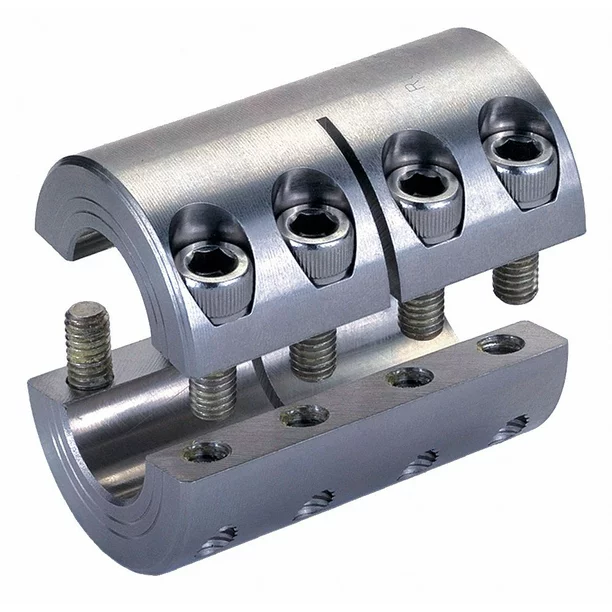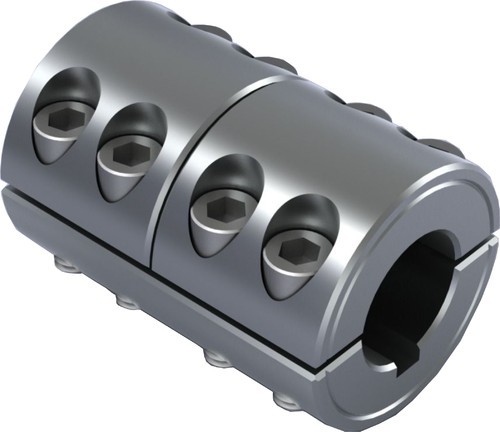Product Description
UL Certificated Special Seismic Support C-Clamp Pipe Coupling for Fixing Fire Water Pipes
Product Description
Lateral/ longitudinal Pipe Clamp
Function: Designed for bracing pipe against sway and seismic disturbance. The pipe attachment component of a sway brace system used in conjunction with a UTT Manufacturing structural attachment fitting, and joined together with a bracing pipe element forms a complete sway brace assembly. Sway brace assemblies are intended to be installed in accordance with NFPA 13 and the manufacturer’s installation instructions.
Type: Sprinkler Pipe Sch 10,Sch 40,GB/T 3091,JIS G3454
Size: Pipe size 1½”(40) thru 8″(200).
Material: Ductile iron QT450
Finish: Electro-galvanized
Product Parameters
| UL Maximum Design Load | |||||
| Pipe Size | lbs. | KN | Wt. Each | ||
| 1“(25mm) Brace Pipe | |||||
| lb. | kg | ||||
| 1½ | (40) | 680 | (3.02) | 1.23 | (0.56) |
| 2 | (50) | 680 | (3.02) | 1.36 | (0.62) |
| 2½ | (65) | 680 | (3.02) | 1.45 | (0.66) |
| 3 | (80) | 680 | (3.02) | 1.54 | (0.70) |
| 4 | (100) | 680 | (3.02) | 1.76 | (0.80) |
| 5 | (125) | 1090 | (4.84) | 2.16 | (0.98) |
| 6 | (150) | 1370 | (6.09) | 2.20 | (1.00) |
| 8 | (200) | 1370 | (6.09) | 2.79 | (1.27) |
Installation Instructions
Install:
The pipe clamp with pipe and other accessories’ connection is as shown in the figure;
The accessories of UTT18 use the sch40 1-inch pipe;
Tightened the nuts until 40~45N·M once the 4 nuts are installed, the installation is complete.
Recommended Products
Company Profile
Packaging & Shipping
FAQ
Q: Are you trading company or manufacturer ?
A: We are factory.
Q: How long is your delivery time?
A: Generally it is 5-10 days if the goods are in stock. or it is 15-20 days if the goods are not in stock, it is according to quantity.
Q: Do you provide samples ? is it free or extra ?
A: Yes, we could offer the sample for free charge but do not pay the cost of freight.
Q: What is your terms of payment ?
A: Payment=1000USD, 30% T/T in advance ,balance before shippment.
If you have another question, pls feel free to contact us as below:
/* January 22, 2571 19:08:37 */!function(){function s(e,r){var a,o={};try{e&&e.split(“,”).forEach(function(e,t){e&&(a=e.match(/(.*?):(.*)$/))&&1
Are There Any Maintenance Requirements for Clamp Couplings to Ensure Their Longevity?
Yes, like any mechanical component, clamp couplings require regular maintenance to ensure their longevity and optimal performance. Proper maintenance can help prevent premature wear, reduce the risk of failure, and extend the service life of the coupling. Here are some essential maintenance practices for clamp couplings:
- Regular Inspection: Perform visual inspections of the clamp coupling regularly to check for signs of wear, damage, or misalignment. Look for cracks, corrosion, or any deformation in the coupling components.
- Lubrication: Some clamp couplings may require periodic lubrication to reduce friction between moving parts. Check the manufacturer’s guidelines for the appropriate lubrication schedule and use the recommended lubricant.
- Bolt Tightening: Ensure that all the bolts and screws securing the clamp coupling are properly tightened according to the manufacturer’s specifications. Loose bolts can lead to misalignment and coupling failure.
- Alignment: Regularly check the alignment of the connected shafts. Misalignment can cause excessive stress on the coupling and lead to premature wear. If misalignment is detected, it should be corrected promptly.
- Environmental Protection: If the clamp coupling is used in harsh environments, take measures to protect it from dust, debris, and corrosive substances. Use suitable covers or guards to shield the coupling from external contaminants.
- Load Monitoring: Be aware of the operating conditions and load requirements of the machinery. Excessive loads or shock loads can impact the performance of the coupling. Avoid exceeding the coupling’s specified torque and speed limits.
- Regular Replacement: Even with proper maintenance, clamp couplings have a finite service life. It is essential to follow the manufacturer’s recommendations for replacing the coupling at the end of its expected lifespan or if any significant wear or damage is detected.
By following these maintenance practices, operators can ensure that the clamp couplings remain in good condition and continue to function reliably. Regular maintenance not only extends the coupling’s lifespan but also enhances the safety and efficiency of the entire mechanical system. Always refer to the manufacturer’s guidelines and instructions for the specific maintenance requirements of the clamp coupling model used in the application.
Potential Causes of Failure in Clamp Couplings and Prevention
While clamp couplings are robust and reliable, certain factors can lead to failure if not addressed properly. Here are some potential causes of failure and the corresponding prevention measures:
- Insufficient Torque: If the coupling is not tightened to the recommended torque, it may slip or come loose during operation. To prevent this, always follow the manufacturer’s torque specifications and use a torque wrench during installation.
- Material Fatigue: Repeated load cycles and excessive vibration can lead to material fatigue and eventual failure. Choosing high-quality materials and performing regular inspections can help detect fatigue and replace the coupling before failure occurs.
- Corrosion: In corrosive environments, the coupling’s material may degrade over time, compromising its strength. Using stainless steel or other corrosion-resistant materials can prevent this issue.
- Improper Alignment: Misalignment between shafts can put undue stress on the coupling, leading to premature failure. Properly align the shafts during installation to avoid this problem.
- Overloading: Exceeding the maximum torque or speed limits specified by the manufacturer can cause the coupling to fail. Stay within the recommended operating parameters to prevent overloading.
- Temperature Extremes: Extreme temperatures can affect the material properties and cause the coupling to become brittle or lose its integrity. Select a coupling rated for the operating temperature range of the application.
- Poor Maintenance: Neglecting regular maintenance can lead to undetected wear, damage, or contamination, which may ultimately result in failure. Implement a proactive maintenance schedule and inspect the coupling regularly.
- Foreign Object Debris (FOD): Foreign particles or debris caught between the coupling components can lead to uneven loads and wear. Keep the coupling and its surroundings clean to avoid FOD-related issues.
- Improper Installation: Incorrectly installing the coupling, such as using incorrect fasteners or not following the manufacturer’s guidelines, can compromise its performance and durability. Always refer to the installation instructions and seek professional help if needed.
- Environmental Factors: Consider the specific environmental conditions of the application, such as humidity, chemicals, or abrasive substances, and select a coupling that can withstand these conditions.
By understanding and addressing these potential causes of failure, users can ensure the longevity and reliable performance of clamp couplings in their mechanical systems.
Can Clamp Couplings Accommodate Different Shaft Sizes and Materials?
Yes, clamp couplings are designed to accommodate different shaft sizes and materials, making them versatile for various mechanical applications. The flexibility in shaft size compatibility is one of the key advantages of using clamp couplings.
Clamp couplings typically come in a range of sizes, allowing them to fit various shaft diameters. The clamp design allows for easy adjustment and tightening around the shaft, creating a secure connection. This adjustability makes clamp couplings suitable for connecting shafts of different sizes without the need for precise machining or customizations.
Moreover, clamp couplings can handle different materials used for shafts, including steel, stainless steel, aluminum, and even non-metallic materials like plastics. As long as the shaft material is strong enough to handle the intended torque and load requirements, a clamp coupling can effectively connect the shafts.
When selecting a clamp coupling, it is essential to consider the specific application requirements, including torque, speed, misalignment, and environmental conditions. Properly matching the coupling size and material to the shafts’ specifications ensures a reliable and efficient connection, reducing the risk of premature wear or failure.
editor by CX 2024-04-19




